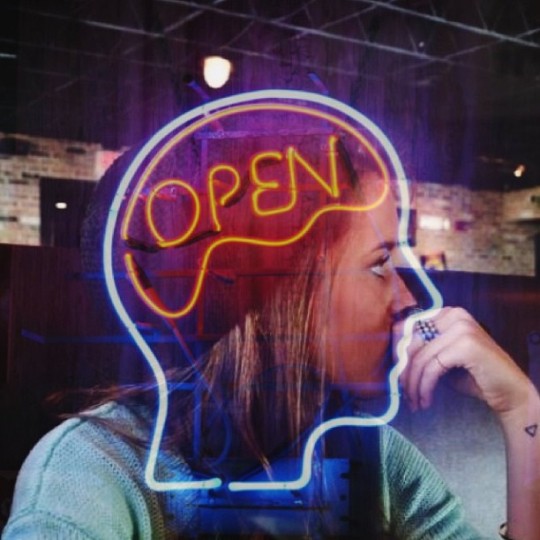Text
It wasn’t Rocket Science, It was just Brain Surgery
09.12.2016 - It has been 10 months since my brain surgery to partially remove a central brain tumor. Emotionally and psychologically coming to terms with the experience has been the hardest part. It has been a difficult topic to really talk about and explain to others, which is why I have found it easier to shrug it off as no big deal. I also feel self-conscious about my experience to a certain degree. But lately I have been thinking about how reading other people’s stories about brain surgery recovery helped me in a way no one else could have: explaining what to expect, if certain things are normal or not, the do’s and don’ts of recovery and finding the personal motivation to recover. I have learnt a lot about myself and have had an epiphany about life and identity. I came to realise that your entire being - who you are - is shaped by your brain. You are because you can think and feel; and you can’t do that without your brain. Your whole body is just there to protect and utilise your brain. I have decided that it might not only be cathartic for me to write my own experience, but could also be encouraging and useful for others.
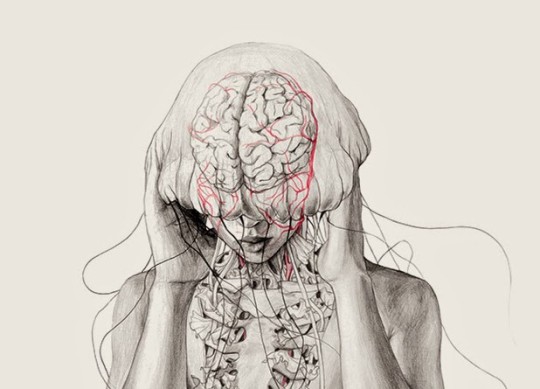
On the 2nd of February 2016, my world was changed forever. After months of going to doctors in order to treat - or at least find out the cause of - severe migraines, random projectile vomiting, pins and needles, constant fatigue and sometimes blurred vision, I finally found out from a specialist that I have a brain tumor. Sitting in the waiting room and seeing the nurses facial responses to my MRI scan was unsettling. Waiting rooms are undoubtedly a symbol of anxiousness. I remember not knowing what I was about to be told, but feeling the tangible sense of unease fill the room. I could never have predicted how much my life was about to change.
The news was surreal, one of those “this happens to other people, not to me” moments. I didn’t grasp then what I was being told. After a couple of days back at home, I returned to hospital where I met the neurosurgeon who was to perform my operation. He carefully explained the procedure; cut open my head, remove the veins of the tumor, cut down the middle of my brain, drain the growth then cut out what they can. Funny how the first time I cried was when he told me that I would be missing three months of varsity.
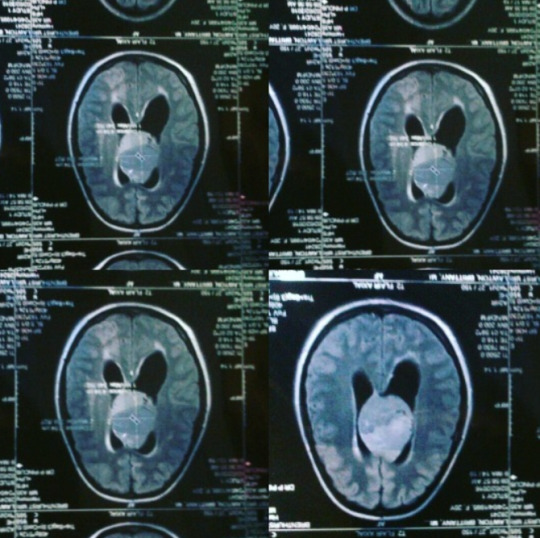
I don’t remember much after that. I had the surgery on the 9th of February and had been in a deep sleep for a couple of days. I was told that I had two grand-mal seizures and an aneurysm; my left side having lost motion. Waking up and becoming conscious really are two different things. I had been told stories about being awake and having conversations with people, but I do not remember any of those experiences. During the process of becoming conscious, I was suddenly aware of how different everything felt. How difficult it was to perform simple tasks and that everything over-stimulated me to the point of exhaustion. As I was slowly becoming aware of my body and what I had just been through – knowing the long row of stitches across my head is evidence of the trauma – I became responsive and emotive. I was experiencing fear, anxiety, restlessness, nervousness, worry, doubt, and a lingering unknown. There was a massive flood of emotion for a couple of weeks owing to the realization that I was alive and had survived something so traumatic. Then I couldn’t sleep. I was so scared. The nurses would bathe me and talk to me until I calmed down. I remember having asked to brush my teeth at 3 A.M and the nurse said no. That was the first time I cried since the operation. I think I cried every day after that. They don’t tell you if you will eventually stop being so emotional; and if so, when?
My biggest shock came when the physiotherapist asked me to move my legs up and down and I could only move my right one. I would lie there for ages thinking, “move”, and picturing my left leg sliding upwards and downwards. But nothing would happen. The frustration experienced in that moment was something I had never felt before. The disconnection between my thoughts and actions and that loss of control was absolutely terrifying. Looking at me, you would never think I was having such an intense internal struggle. I may have just been lying there, but I was spending every waking moment trying to overcome my body’s resistance to movement through thought. I felt trapped inside my own body. That’s when I realised that you and your body are so separate. I experienced this again in situations where I would grab things tightly in my left hand, clenched fist, and be unable to let go. I had grabbed a nurse once, and no matter how much I wanted to let go, my hand was not listening. This was a similar side effect to split brain patients; my left side of my body was not listening to the right hemisphere of my brain.
The realization that I stuttered, and spoke very slowly, frustrated me. I would try to speak as little as possible and would grow despondent upon hearing myself, as it did not coincide with what was going on inside my mind. I had uncontrollable tremors in my hands and arms. An occupational therapist tested me with some basic mathematics and memory exercises. It was harder than I thought it would be. I felt like a child as I struggled to identify shapes and objects. At times I would be okay then suddenly hit a complete blank and panic. She said this is called a “brain stutter” and occasionally this still happens to me now. But I have learnt to take a moment to think of something else until I am settled enough to return to the previous task. I have forgotten things. But I don’t know what things I have forgotten until I am presented with a person that I should know or story that I should remember, but don’t.
Learning to walk was the strangest feeling. I never knew how much thought and co-ordination goes into something so “easy”. I noticed how my concentration during such a seemingly simple task was affected so greatly by the environment. I became aware of how different walking is in a crowded space versus an empty space; a well lit space versus a dim space; stairs versus the ground, ect. I eventually changed my mind-set so that instead of feeling frustration or upset when I was struggling or unable to do things, I would celebrate small victories. Victories such as eating without messing, going to the bathroom on my own, putting on my slippers by myself, using a zip or fastening a button and picking things up with my left hand. These are small achievable goals that kept me positive and motivated me to recover.
The aknowledgement of this tumour and the aftermath of the surgery changed me. I became aware of this foreign body within my brain and its presence became defining. In order for me to move on in life I had to accept and normalise its existence. No one has the intention of making someone diagnosed with a tumour feel like a pariah, but it tends to happen with the sensitivity of a life altering diagnoses. The fact that I was someone with a brain tumour surrounded by people who do not have one; or that I am someone who has had multiple brain surgeries, automatically makes me feel like an outsider.
Audre Lorde in her Cancer Journals said “either I could love my body one breasted now, or remain forever alien to myself”. This statement hits hard. Coming to terms with your own identity is no easy task especially when it is something life altering; I had been through this process once before with my sexuality. And so I decided that I needed to accept myself with a tumor and as a brain surgery survivor, or be alien to myself once more.
These internal struggles continue – even now - unbeknownst to those around me. My thinking is definitely slower than before and it takes me longer to process and respond to things – sometimes this can be overwhelming, even if I am the only one aware of it. This is where insecurity comes in to play; at times I wonder if I am being perceived as “normal” in social situations. This then makes me feel like I should explain to to strangers that I am still recovering so that my behavior can be understood. I don’t know then if people are looking at me with curiosity, concern or confusion. Sometimes I feel strong in what I have overcome, and at times I feel so alone in my experience. I learnt to go easy on myself, and take things slow. My happiness comes from being myself in comfortable spaces; a renaissance that is truly liberating. I say renaissance because there is a clear distinction of myself and life before and after the surgery. Things feel different. Things are different. There is no way to tell if what I feel/ felt was normal. But my new normal involves an inner peace that does not take life for granted.
I didn’t know that It would take this long. I didn’t know that I would have such difficulty placing my own personality. I didn’t know that I would feel so foreign in my own body, so much so that I didn’t like looking at myself in mirrors or photographs. I wasn’t okay with being this person. That I would put on so much weight from the medication and the lack of mobility. Or that I would be so fearful of old symptoms returning and that I would feel a sense of guilt for surviving something that so many others didn’t.
The surgery is physically over, but mentally, I am still processing everything that had happened. I could go on but instead I will say that I am thankful my surgery went so well and that I was where I needed to be at that time. Now I am able to adjust to new strategies and am dealing with these overwhelming feelings in healthy ways.
----------------------------------------------------------------------------------------------------
20.09.2019 - Today I write this 10 months after my second craniotomy under completely different circumstances. I have experienced this recovery at a different stage of my life, I am older, wiser and more motivated; facing a new perspective on the human experience. Learning from everyone around me as I know that everyone has a story and everyone is a lesson, offering a unique perspective on the chaos of humanity. My second diagnosis and surgery did make me wonder what lessons I still needed to learn. I was angered. Then depressed. Wasn’t one surgery enough? Then I surrendered. Truth be told, there has been a lot to learn... and there’s still so much more! The most valuable lessons about my body, health, consciousness, community and purpose came from the aftermath of the second surgery. I suppose at some point, you need to decide whether you are going to be a victim or if you are going to use the resources you have access to in order to deal with the situation you are faced with.
Although living in the past can hinder your ability to move forward/overcome. Looking back and consciously reflecting on how far you have progressed through a certain phase in your life is rewarding. I often do that of course when I think about my progress from my first surgery until now. But do not stay there too long. Do not allow your past experiences to define you. Allow them to inform your future and motivate more progression. I am also acknowledging the importance of bridging the gaps between geography and lifestyles as the older you get, the more you realise you need the people from your past. I have been pleasantly suprised by the teachers, friends, classmates, mentors and family members that have laid branches and connections to me in the most unexpected ways and places. I reflect on these relationships and acknowledge their contributions with gratitude.
I came across a quote by Tony Robbins that said: “it is not the events of our lives that shape us and who we are, but rather our beliefs as to what those events mean.” And those beliefs are determined by the way in which we tell our story. The meaning we attach to the events—how we interpret them— is what shapes who we are today and who we’ll become tomorrow. And I am now actively telling a better story in this chapter of my life by creating the reality I experience rather than passively becoming my default self. Now knowing that things happen FOR you, and not TO you has been game changing for me. And since curating the world I immerse myself in - deciding which communities I am a part of, deciding what motivates me and why, choosing to only invest my energy into things that will contribute to achieving my goals - I have recognised the power in my sense of self.
This is a new sense of self whereby the changes and transformations I am making on the other side of this trauma have presented an opportunity to identify and build a new structure and way of living. This change has at times been uncomfortable - but as Nerri Oxman said in ‘Abstract Art of Design (Season 2 episode 2), “If it feels uncomfortable, you’re probably doing something right.” This process of change has also brought along with it responsibility, which I now understand as the ability to respond to circumstances. I am in control of my responses and no longer a victim of my diagnosis or as a patient, providing a reorientation around healthcare and healing. Now knowing that ‘Doctor’ means ‘Teacher’ (and not healer) and that movement and food is the best medicine, I can asses that medication, doctor visits and language were not the best ways for me to recover, but rather movement, community and nourishment has allowed me to surpass previous mis-understandings of what my healthy self should be, look and feel like. For me, the courageous part of it all has been turning towards the self, orienting the symptoms - how I feel and what could have caused the tumor to manifest - and making the necessary changes. Everyday I see how I have progressed in different facets of my life, I can’t help pass judgement on myself but i am aware that it is an endless process.
This has cultivated a new kind of strength coming from a different place of mature consciousness - one that has developed from healthy habits, consistency and daily practices.
And so the journey continues...
3 notes
·
View notes
Quote
…for the first time I seemed to become the owner of my life, not by interpretive appropriation, exploitation and understanding of what had been, but simply by that new truthfulness itself which flowed through even my memories.
Rainer Maria Rilke, from a letter to Lou Andreas-Salomé c. June 1914
(via violentwavesofemotion)
340 notes
·
View notes
Photo

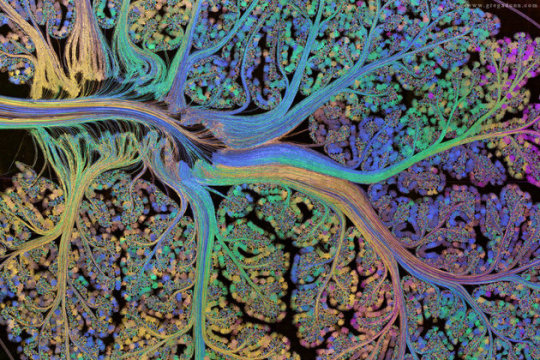
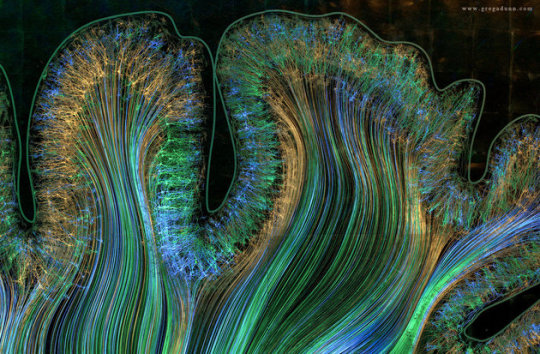
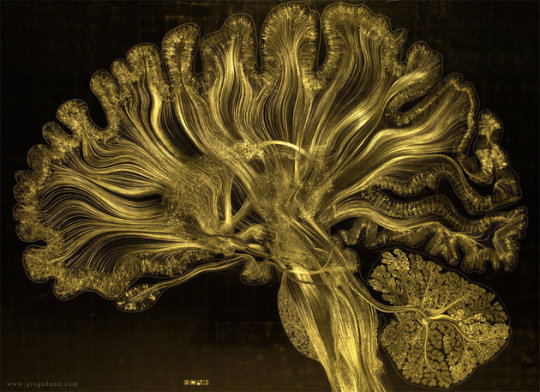
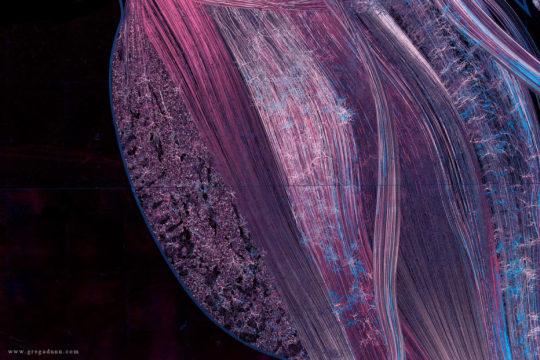

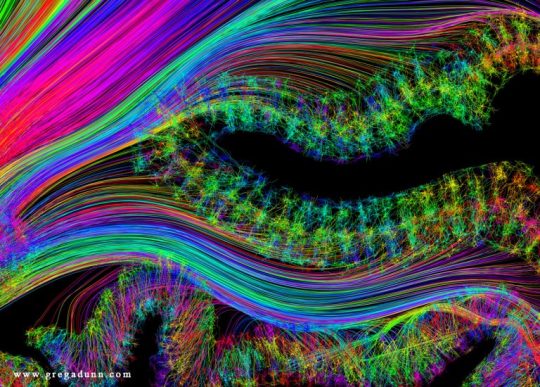
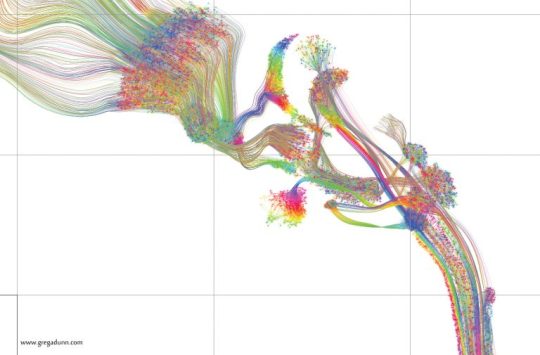


Giant Artwork Reflects The Gorgeous Complexity of The Human Brain
The new work at The Franklin Institute may be the most complex and detailed artistic depiction of the brain ever.
Your brain has approximately 86 billion neurons joined together through some 100 trillion connections, giving rise to a complex biological machine capable of pulling off amazing feats. Yet it’s difficult to truly grasp the sophistication of this interconnected web of cells.
Now, a new work of art based on actual scientific data provides a glimpse into this complexity.
The 8-by-12-foot gold panel, depicting a sagittal slice of the human brain, blends hand drawing and multiple human brain datasets from several universities. The work was created by Greg Dunn, a neuroscientist-turned-artist, and Brian Edwards, a physicist at the University of Pennsylvania, and goes on display at The Franklin Institute in Philadelphia.
“The human brain is insanely complicated,” Dunn said. “Rather than being told that your brain has 80 billion neurons, you can see with your own eyes what the activity of 500,000 of them looks like, and that has a much greater capacity to make an emotional impact than does a factoid in a book someplace.”
To reflect the neural activity within the brain, Dunn and Edwards have developed a technique called micro-etching: They paint the neurons by making microscopic ridges on a reflective sheet in such a way that they catch and reflect light from certain angles. When the light source moves in relation to the gold panel, the image appears to be animated, as if waves of activity are sweeping through it.
First, the visual cortex at the back of the brain lights up, then light propagates to the rest of the brain, gleaming and dimming in various regions — just as neurons would signal inside a real brain when you look at a piece of art.
That’s the idea behind the name of Dunn and Edwards’ piece: “Self Reflected.” It’s basically an animated painting of your brain perceiving itself in an animated painting.
To make the artwork resemble a real brain as closely as possible, the artists used actual MRI scans and human brain maps, but the datasets were not detailed enough. “There were a lot of holes to fill in,” Dunn said. Several students working with the duo explored scientific literature to figure out what types of neurons are in a given brain region, what they look like and what they are connected to. Then the artists drew each neuron.
Dunn and Edwards then used data from DTI scans — a special type of imaging that maps bundles of white matter connecting different regions of the brain. This completed the picture, and the results were scanned into a computer. Using photolithography, the artists etched the image onto a panel covered with gold leaf.
“A lot of times in science and engineering, we take a complex object and distill it down to its bare essential components, and study that component really well” Edwards said. But when it comes to the brain, understanding one neuron is very different from understanding how billions of neurons work together and give rise to consciousness.
“Of course, we can’t explain consciousness through an art piece, but we can give a sense of the fact that it is more complicated than just a few neurons,” he added.
The artists hope their work will inspire people, even professional neuroscientists, “to take a moment and remember that our brains are absolutely insanely beautiful and they are buzzing with activity every instant of our lives,” Dunn said. “Everybody takes it for granted, but we have, at the very core of our being, the most complex machine in the entire universe.”
Image 1: A computer image of “Self Reflected,” an etching of a human brain created by artists Greg Dunn and Brian Edwards.
Image 2: A close-up of the cerebellum in the finished work.
Image 3: A close-up of the motor cortex in the finished work.
Image 4: This is what “Self Reflected” looks like when it’s illuminated with all white light.
Image 5: Pons and brainstem close up.
Image 6: Putkinje neurons - color encodes reflective position in microetching.
Image 7: Primary visual cortex in the calcarine fissure.
Image 8: Basal ganglia and connected circuitry.
Image 9: Parietal cortex.
Image 10: Cerebellum.
Credit for all Images: Greg Dunn - “Self Reflected”
Source: The Huffington Post (by Bahar Gholipour)
6K notes
·
View notes
Photo

Brain Drain
A hospital in Michigan was recently ordered to pay $21 million to a family after they ‘accidentally’ performed brain surgery on a woman who was only in for a jaw realignment due to TMJ.
The lawyer said hospital staff mixed up Nayyar’s x-rays with those of another patient, drilled five holes in her head and sawed off the right side of her skull, then “ poked around in her brain before realizing they had the wrong patient.”
Fieger said neither the family nor the state of Michigan were informed of the mistake, according to The Detroit News.
Source
7 notes
·
View notes
Photo

LSD’s impact on the brain revealed in groundbreaking images
The profound impact of LSD on the brain has been laid bare by the first modern scans of people high on the drug.
The images, taken from volunteers who agreed to take a trip in the name of science, have given researchers an unprecedented insight into the neural basis for effects produced by one of the most powerful drugs ever created.
A dose of the psychedelic substance – injected rather than dropped – unleashed a wave of changes that altered activity and connectivity across the brain. This has led scientists to new theories of visual hallucinations and the sense of oneness with the universe some users report.
The brain scans revealed that trippers experienced images through information drawn from many parts of their brains, and not just the visual cortex at the back of the head that normally processes visual information. Under the drug, regions once segregated spoke to one another.
Further images showed that other brain regions that usually form a network became more separated in a change that accompanied users’ feelings of oneness with the world, a loss of personal identity called “ego dissolution”.
David Nutt, the government’s former drugs advisor, professor of neuropsychopharmacology at Imperial College London, and senior researcher on the study, said neuroscientists had waited 50 years for this moment. “This is to neuroscience what the Higgs boson was to particle physics,” he said. “We didn’t know how these profound effects were produced. It was too difficult to do. Scientists were either scared or couldn’t be bothered to overcome the enormous hurdles to get this done.”
LSD, or lysergic acid diethylamide, was first synthesised in 1938 but its extraordinary psychological properties did not become clear until 1943. Throughout the 1950s and 60s the drug had a major impact on psychology and psychiatric research, but its adoption as a recreational drug and its influence on youth culture led to it being banned in the 1960s.
The outlawing of LSD had an immediate effect on scientific research and studies into its effects on the brain and its potential therapeutic uses have been hampered ever since. The latest study was made possible through a crowdfunding campaign and The Beckley Foundation, which researches psychoactive substances.
With his colleague Robin Carhart-Harris, Nutt invited 20 physically and mentally healthy volunteers to attend a clinic on two separate days. One day they received an injection of 75mcg of LSD and on the other they received a placebo instead.
Using three different brain imaging techniques, named arterial spin labelling, resting state MRI and magnetoencephalography, the scientists measured blood flow, functional connections within and between brain networks, and brainwaves in the volunteers on and off the drug.
Carhart-Harris said that on LSD, scans suggested volunteers were “seeing with their eyes shut”, though the images they reported were from their imaginations rather than the world outside. “We saw many more areas of the brain than normal were contributing to visual processing under LSD, even though volunteers’ eyes were closed,” he said. The more prominent the effect, the more intense people rated their dreamlike visions.
Under the influence, brain networks that deal with vision, attention, movement and hearing became far more connected, leading to what looked like a “more unified brain”, he said. But at the same time, other networks broke down. Scans revealed a loss of connections between part of the brain called the parahippocampus and another region known as the retrosplenial cortex.

A second image shows different sections of the brain, either on placebo, or under the influence of LSD (lots of orange). Photograph: Imperial/Beckley Foundation.
The effect could underpin the altered state of consciousness long linked to LSD, and the sense of the self-disintegrating and being replaced with a sense of oneness with others and nature. “This experience is sometimes framed in a religious or spiritual way, and seems to be associated with improvements in wellbeing after the drug’s effects have subsided,” Carhart-Harris said.
The drug can be seen as reversing the more restricted thinking we develop from infancy to adulthood, said Nutt, whose study appears in the journal Proceedings of the National Academy of Sciences.
The study could pave the way for LSD or related chemicals to be used to treat psychiatric disorders. Nutt said the drug could pull the brain out of thought patterns seen in depression and addiction through its effects on brain networks.
Amanda Feilding, director of the Beckley Foundation, said: “We are finally unveiling the brain mechanisms underlying the potential of LSD, not only to heal, but also to deepen our understanding of consciousness itself.”
Top Image: Image shows how, with eyes-closed, much more of the brain contributes to the visual experience under LSD than under placebo. The magnitude of this effect correlates with participants’ reports of complex, dreamlike visions. Photograph: Imperial/Beckley Foundation.
Source: Guardian (by Ian Sample)
4K notes
·
View notes
Text
stop for a minute and realize you are a 10lb brain piloting a slab of meat
852K notes
·
View notes
Photo


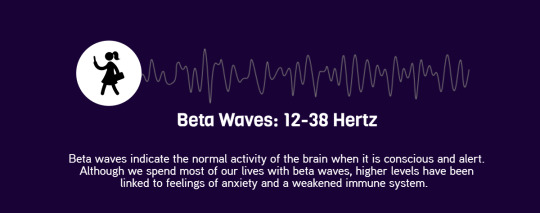
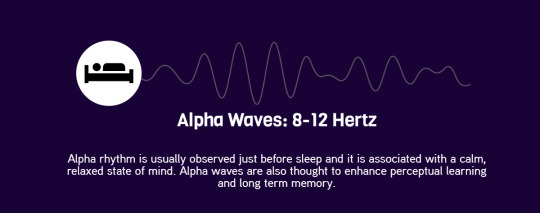
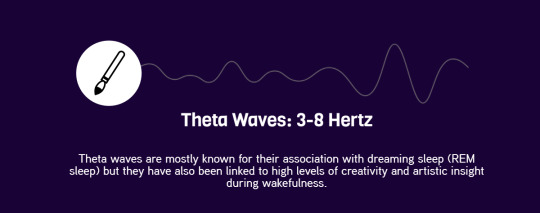
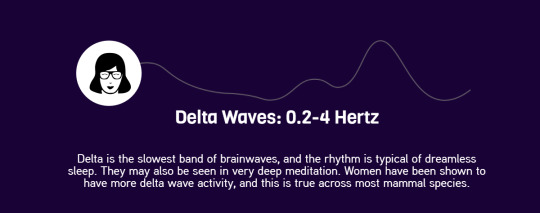

A human brain has around 86 billion neurons, and the communication between these neurons are constant. The sheer scale of these interactions mean a computer (an EEG) can register this electrical activity, with different frequencies indicating different mental states.
Sources
12K notes
·
View notes
Video
youtube
RECOMMENDATION: Dr. Jordan Peterson - “The Necessity of Virtue”
You know how you sometimes get up and think, ‘gee, I wish my worldview would change forever and never be the same again’?
Me neither. Not really. But this video clip will BLOW YOUR MIND.

(GIF source: thetardiswantstoknowwherecasis)
62 notes
·
View notes
Text
The Most Valuable Things Everyone Should Know by Professor Jordan B Peterson
Tell the truth.
Do not do things that you hate.
Act so that you can tell the truth about how you act.
Pursue what is meaningful, not what is expedient.
If you have to choose, be the one who does things, instead of the one who is seen to do things.
Pay attention.
Assume that the person you are listening to might know something you need to know. Listen to them hard enough so that they will share it with you.
Plan and work diligently to maintain the romance in your relationships.
Be careful who you share good news with.
Be careful who you share bad news with.
Make at least one thing better every single place you go.
Imagine who you could be, and then aim single-mindedly at that.
Do not allow yourself to become arrogant or resentful.
Try to make one room in your house as beautiful as possible.
Compare yourself to who you were yesterday, not to who someone else is today.
Work as hard as you possibly can on at least one thing and see what happens.
If old memories still make you cry, write them down carefully and completely.
Maintain your connections with people.
Do not carelessly denigrate social institutions or artistic achievement.
Treat yourself as if you were someone that you are responsible for helping.
Ask someone to do you a small favour, so that he or she can ask you to do one in the future.
Make friends with people who want the best for you.
Do not try to rescue someone who does not want to be rescued, and be very careful about rescuing someone who does.
Nothing well done is insignificant.
Set your house in perfect order before you criticize the world.
Dress like the person you want to be.
Be precise in your speech.
Stand up straight with your shoulders back.
Don’t avoid something frightening if it stands in your way – and don’t do unnecessarily dangerous things.
Do not let your children do anything that makes you dislike them.
Do not transform your wife into a maid.
Do not hide unwanted things in the fog.
Notice that opportunity lurks where responsibility has been abdicated.
Read something written by someone great.
Pet a cat when you encounter one on the street.
Do not bother children when they are skateboarding.
Don’t let bullies get away with it.
Write a letter to the government if you see something that needs fixing – and propose a solution.
Remember that what you do not yet know is more important than what you already know.
Be grateful in spite of your suffering.
5K notes
·
View notes
Photo

The split brain: A tale of two halves
In the first months after her surgery, shopping for groceries was infuriating. Standing in the supermarket aisle, Vicki would look at an item on the shelf and know that she wanted to place it in her trolley — but she couldn’t. “I’d reach with my right for the thing I wanted, but the left would come in and they’d kind of fight,” she says. “Almost like repelling magnets.” Picking out food for the week was a two-, sometimes three-hour ordeal. Getting dressed posed a similar challenge: Vicki couldn’t reconcile what she wanted to put on with what her hands were doing. Sometimes she ended up wearing three outfits at once. “I’d have to dump all the clothes on the bed, catch my breath and start again.”
In one crucial way, however, Vicki was better than her pre-surgery self. She was no longer racked by epileptic seizures that were so severe they had made her life close to unbearable. She once collapsed onto the bar of an old-fashioned oven, burning and scarring her back. “I really just couldn’t function,” she says. When, in 1978, her neurologist told her about a radical but dangerous surgery that might help, she barely hesitated. If the worst were to happen, she knew that her parents would take care of her young daughter. “But of course I worried,” she says. “When you get your brain split, it doesn’t grow back together.”
In June 1979, in a procedure that lasted nearly 10 hours, doctors created a firebreak to contain Vicki’s seizures by slicing through her corpus callosum, the bundle of neuronal fibres connecting the two sides of her brain. This drastic procedure, called a corpus callosotomy, disconnects the two sides of the neocortex, the home of language, conscious thought and movement control. Vicki’s supermarket predicament was the consequence of a brain that behaved in some ways as if it were two separate minds.
After about a year, Vicki’s difficulties abated. “I could get things together,” she says. For the most part she was herself: slicing vegetables, tying her shoe laces, playing cards, even waterskiing.
But what Vicki could never have known was that her surgery would turn her into an accidental superstar of neuroscience. She is one of fewer than a dozen ‘split-brain’ patients, whose brains and behaviours have been subject to countless hours of experiments, hundreds of scientific papers, and references in just about every psychology textbook of the past generation. And now their numbers are dwindling.
Through studies of this group, neuroscientists now know that the healthy brain can look like two markedly different machines, cabled together and exchanging a torrent of data. But when the primary cable is severed, information — a word, an object, a picture — presented to one hemisphere goes unnoticed in the other. Michael Gazzaniga, a cognitive neuroscientist at the University of California, Santa Barbara, and the godfather of modern split-brain science, says that even after working with these patients for five decades, he still finds it thrilling to observe the disconnection effects first-hand. “You see a split-brain patient just doing a standard thing — you show him an image and he can’t say what it is. But he can pull that same object out of a grab-bag,” Gazzaniga says. “Your heart just races!”
Continue reading
433 notes
·
View notes
Photo
I experienced this post-surgery. The removal of my brain tumor required my corpus collosum to be split. I would be holding things in my left hand and want to put it down,but my brain wouldn’t let me. Weirdest feeling ever, as if your body is not your own.

you may heard of the split brain experiments, but let me tell you some really interesting things
the split brain is done so people have less epileptic seizures.
these seizures are caused by random neuron firings in a part of the brain
because of the corpus callosum (connects the left and right brain, commuicates information between the two parts) these random neuron firings start to spread all around the brain

this is no buena, there are so many neurons firing around the brain, people have horrible seizures

so to fix this, scientists cut up the corpus callosum. now these neurons firing can’t get around the brain, because theres to pathway for them to get to the other side. yay, seizures gone!
BUT WAIT! now the person has a split brain! what happens? do they become like mentally challenged zombies?

the answer is NO. much to everyone’s surprise, the split brain doesn’t really impair a person THAT much.
but it does have an effect
some spooky side-effects include a person’s hand having a “mind” of its own.
for example, a man’s left hand attempted to hit his wife, and he tried to stop it with his right hand. (he never wanted to abuse his wife in the first place)
a person was reading a book she really enjoyed, but the left hand decided to close the book
WHAT’S GOING ON?

well the right side of the brain (which controls the left hand) can recognize things but isn’t able to name it (speech controlled by left side of brain)
so when a person is reading a book she enjoys, the right side of the brain controlling the left hand, isn’t able to state that it enjoys the book. so it gets bored and closes it
and that’s the split brain effect. hope you learned something!

11K notes
·
View notes
Photo
This is an image that spoke volumes to me after surgery. It seems to capture and illustrate the internal frustrations of the mind and its control over your body. It feels almost parasitic and foreign when you are unable to control it. But one needs to let go and go with the flow. Hand over your control and know that things will work out.

by Elisa Ancori
292 notes
·
View notes
Audio
Sia - Alive
“You took it all but I’m still breathing”
2K notes
·
View notes


